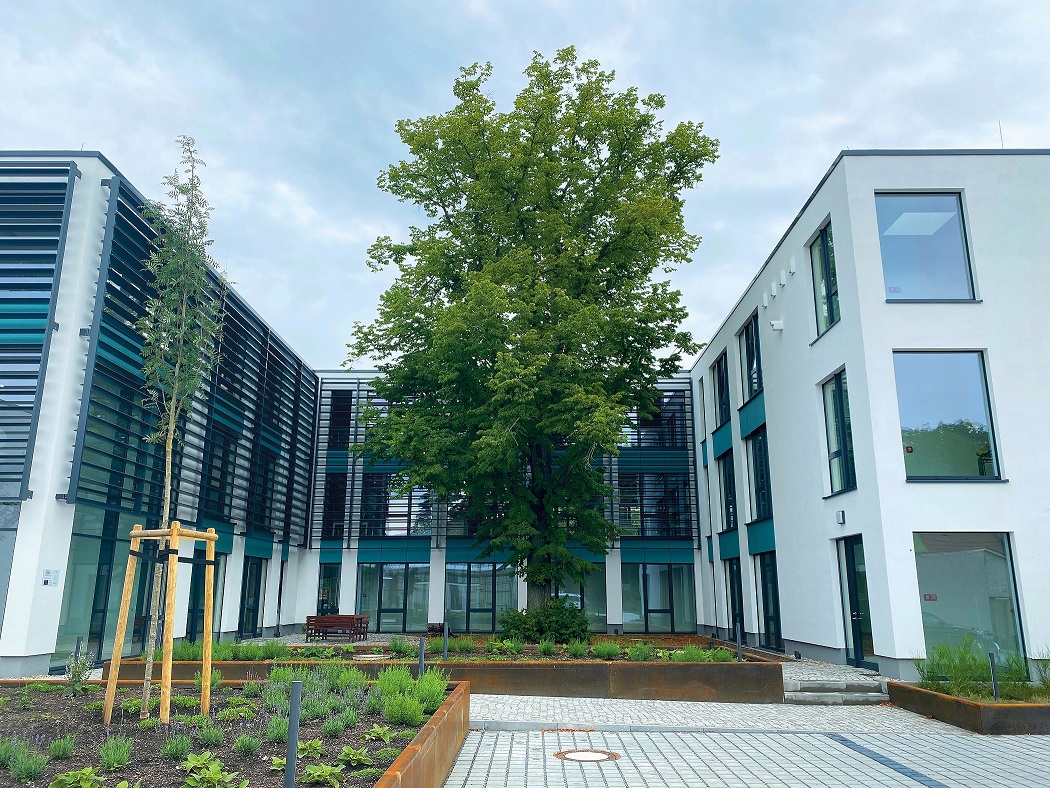Forschungsinstitut für Bergbaufolgelandschaften (FIB) - From opencast mining back to nature

When lignite excavators dig through the landscape, they leave in their aftermath completely destroyed soils. Soil is the basis for human, animal and plant life and therefore requires special protection. In Finsterwalde, research is being conducted into how these areas can be recultivated and made usable again.
Germany has decided to phase out lignite by 2038 at the latest. With the closure of the open cast mines, the question now is: “What will happen to the destroyed soils, waters and landscapes after the departure from coal?” From the south of Brandenburg to the north-east of Saxony lies an area of some 900 square kilometres, the size of the Federal State of Berlin – the Lusatian lignite mining region. For more than 150 years, excavators have been tirelessly shovelling away entire villages and unearthing the brown gold in this region. What remains are open-cast mining pits and dump soils that are hostile to animals and plants – the post-mining landscapes.
In the middle of the Lusatian mining region in Finsterwalde, the Research Institute for Post-Mining Landscapes (FIB) is researching how this nature, which has sustained long-lasting damage as a result of human intervention, can be restored and partly made usable for agriculture and forestry.
Soil and water diversity instead of monotony
Coal mining results in a mixing of the layers of earth and rock that were formed over thousands of years. Some of the deeper layers can react when they come into contact with air and water, leading to severe acidification of soils and water bodies. Residual holes (craters filled with groundwater) and dump soils (mixed layers of earth) can thus reach pH values of less than 3 – which corresponds to the acidity of vinegar or lemon juice. The only way to avoid this is to actively add liming agents so that these environments, which are hostile to animals and plants, can be renaturalised. Researchers at the FIB are investigating these conditions and using many other technical and plant cultivation measures to stimulate the self-healing powers of the soil and enrich it again with organic matter (humus). Lavender, for instance, is being planted on experimental areas or a new forest is being created through afforestation.
New space for innovative research
For quite some time, the building, which had been used as a research institute since the 1960s, no longer met the standards of a modern research facility. Funds from the European Regional Development Fund (ERDF) were used to build a new administration and laboratory building. The U-shaped three-storey building complex offers excellent conditions for contemporary research under improved working conditions with new laboratory technology and is thus ideally adapted to the FIB’s many different research fields. This investment will pay off because the FIB is currently unique in Europe with its applied recultivation research on post-mining landscapes as well as research into the consequences of climate change.
For further information, visit fib-ev.de
Germany has decided to phase out lignite by 2038 at the latest. With the closure of the open cast mines, the question now is: “What will happen to the destroyed soils, waters and landscapes after the departure from coal?” From the south of Brandenburg to the north-east of Saxony lies an area of some 900 square kilometres, the size of the Federal State of Berlin – the Lusatian lignite mining region. For more than 150 years, excavators have been tirelessly shovelling away entire villages and unearthing the brown gold in this region. What remains are open-cast mining pits and dump soils that are hostile to animals and plants – the post-mining landscapes.
In the middle of the Lusatian mining region in Finsterwalde, the Research Institute for Post-Mining Landscapes (FIB) is researching how this nature, which has sustained long-lasting damage as a result of human intervention, can be restored and partly made usable for agriculture and forestry.
Soil and water diversity instead of monotony
Coal mining results in a mixing of the layers of earth and rock that were formed over thousands of years. Some of the deeper layers can react when they come into contact with air and water, leading to severe acidification of soils and water bodies. Residual holes (craters filled with groundwater) and dump soils (mixed layers of earth) can thus reach pH values of less than 3 – which corresponds to the acidity of vinegar or lemon juice. The only way to avoid this is to actively add liming agents so that these environments, which are hostile to animals and plants, can be renaturalised. Researchers at the FIB are investigating these conditions and using many other technical and plant cultivation measures to stimulate the self-healing powers of the soil and enrich it again with organic matter (humus). Lavender, for instance, is being planted on experimental areas or a new forest is being created through afforestation.
New space for innovative research
For quite some time, the building, which had been used as a research institute since the 1960s, no longer met the standards of a modern research facility. Funds from the European Regional Development Fund (ERDF) were used to build a new administration and laboratory building. The U-shaped three-storey building complex offers excellent conditions for contemporary research under improved working conditions with new laboratory technology and is thus ideally adapted to the FIB’s many different research fields. This investment will pay off because the FIB is currently unique in Europe with its applied recultivation research on post-mining landscapes as well as research into the consequences of climate change.
For further information, visit fib-ev.de

